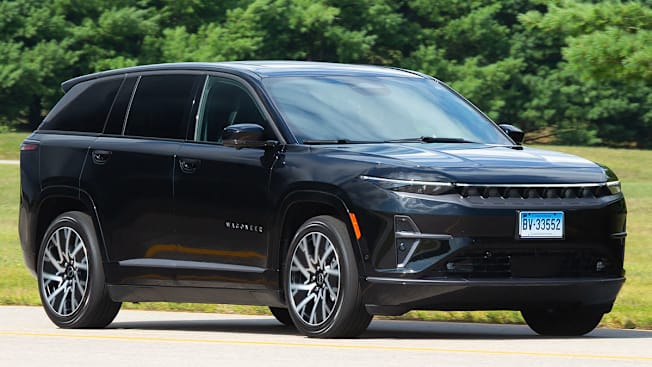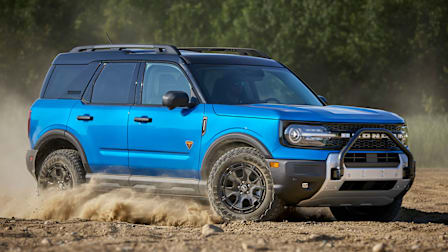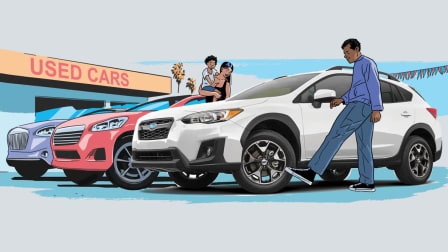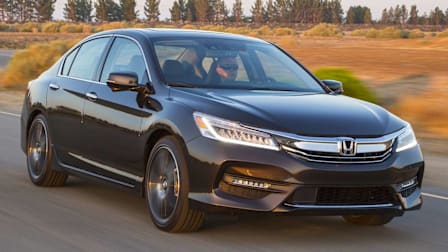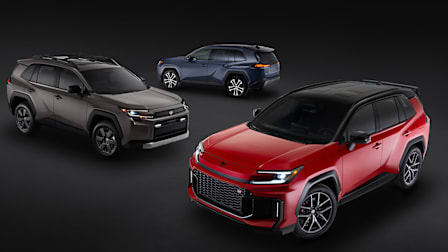First Drive: 2025 Jeep Wagoneer S Electric Vehicle Feels Like an Unfinished Product
From the excessive torque steer and unrefined ride to the compromised controls and inconvenient charging system, this SUV fails to match up with its competitors
The 2025 Jeep Wagoneer S is the brand’s first all-electric vehicle, following the plug-in hybrid electric vehicle (PHEV) versions of the Grand Cherokee and Wrangler.
Although it wears a Wagoneer badge—the name of Jeep’s large SUV—the S is a two-row SUV that’s much closer in size to the Grand Cherokee 4xe. In fact, it’s smaller and has lower capacities than the Grand Cherokee in nearly every measurement except its curb weight, which is 310 pounds more than the 4xe’s.
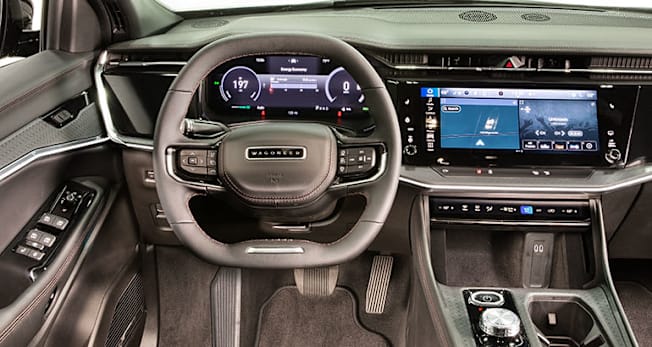
Photo: John Powers/Consumer Reports Photo: John Powers/Consumer Reports
CR's Take
So far, our experience with the Wagoneer S has been underwhelming. One tester said that the SUV seems “dead on arrival” when compared with its competitors. Referencing the SUV’s price, they also said that it is a “Wagoneer in name only, in an attempt to justify the price. It feels like I could be sitting in the interior of a Grand Cherokee that costs around $50,000." In our vehicle logbook, another tester said, “You can get much better EVs for about $20,000 less.”
In short, the Wagoneer S really seems to be behind its competition in nearly every way. It doesn’t have any super advantage or unique proposition over any other two-row mainstream EV SUV, and it’s not anywhere near the same level as luxury all-electric SUVs.
The list of problems is long: an unrefined powertrain, a lot of body movement over bumps, inconsistent brake feel, torque steer, compromised visibility, and convoluted, frustrating-to-use controls. It’s far too high a price to pay for an SUV that doesn’t drive appropriately.
What We Like
Power: It’s not shocking that the automaker known for stuffing Hemi V8s into nearly every product in its portfolio (we’re still waiting for a Pacifica Hemi) will develop an EV with prodigious power. Our Limited has plenty of oomph thanks to the 500 hp generated by the dual-motor setup. This gives the nearly three-ton SUV incredibly quick acceleration. We have tested some powerful EVs, such as the Lucid Air and Porsche Taycan 4S, and the Wagoneer S’s midrange passing power feels as strong as those two cars, which is especially impressive given its weight. It’s hard to imagine the pull you’d get from the 600-hp Launch Edition.
Road, wind, and EV noise: While it doesn’t set a new standard, the Wagoneer S is very quiet inside, maintaining a trend we’ve seen in more recent EVs. The Jeep does a good job of protecting the cabin from wind noise and the hum from the 235/50 R20 tires. Another plus is that there is almost no sound from the electric powertrain. Some EVs have a noticeable whining sound from their electric motors.
Lane centering assistance: This is the first time that we’ve had a vehicle with Stellantis’ latest LCA system, and so far, it has worked well. We really like that the system doesn’t fight the driver when they add in some steering input, such as when going through a sweeping highway bend. It’s natural in those cases for the driver to make some adjustments if they feel the vehicle is getting too close to a vehicle in another lane. The Jeep allows this without counter-steering or tugging the wheel. The Wagoneer S then quickly retakes control when the driver uses less (or no) steering force. On straight roads, the LCA keeps centered in the lane with little steering input needed. Finally, the capacitive touch sensors the system uses to determine if the driver is holding the wheel work well and register quickly.
Cargo area: The space behind the rear seats is very long, making it great for transporting several bags or larger items. However, due to the slope of the rear window, it isn’t particularly tall.
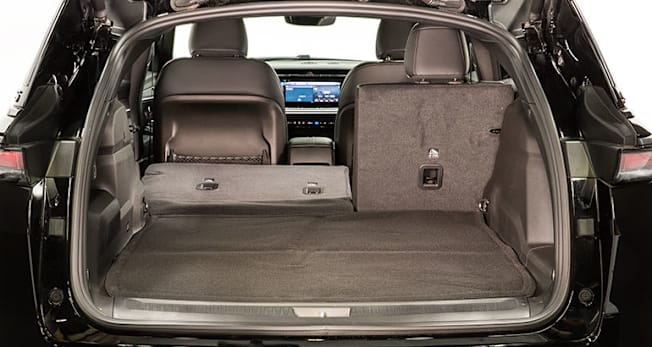
Photo: John Powers/Consumer Reports Photo: John Powers/Consumer Reports
What We Don't Like
Crude powertrain: The Wagoneer S’s 500 hp is of little use if it can’t be efficiently (or even adequately) employed to move the SUV down the road—and that’s a problem for this SUV. As one tester put it, “Unfortunately, the electric powertrain is one of its worst qualities. It is unrefined in a number of ways. For something that is inherently smooth (as electric power), it’s messed up.” Here’s what we’ve experienced so far:
• Uneven power delivery: When accelerating from a stop, there’s an initial power lag, which the driver generally reacts to by pressing down more on the throttle. At this point, the SUV launches ahead with enough abrupt, brute force that the driver has to lift off the throttle or risk losing control.
• Excessive wheelspin: That lag followed by the brutal power delivery often results in the SUV spinning its inside front tire (the left tire when making a left turn, for example) when pulling out into traffic. The only easy way to avoid this is to switch the vehicle into its “Eco” mode, which disengages the front motor—no power, no wheelspin—but also no AWD.
• Torque steer: This is when a vehicle’s acceleration is powerful enough to disrupt its ability to go in a straight line. One tester summed this up best: “There’s quite a bit of torque steer, to the point that if you floor the accelerator, you better be gripping the wheel tight, because it’s tugging back and forth in your hands.”
• Vibrations: Some drivers said that there is a fair amount of vibration that comes through the floor and steering wheel at anything more than 50 percent throttle application. This vibration is also noticeable any time the driver lifts off the accelerator pedal.
Brakes: Every tester found the brakes to be a problem in the Wagoneer S. While the pedal ultimately feels firm, the initial travel is very soft, which isn’t reassuring. It’s as if the regenerative braking system and the friction brakes don’t work in harmony. It’s nearly impossible to smoothly stop the SUV at low speeds because the brakes aggressively grab, no matter how much pressure is put on the pedal. A number of testers said they would “underbrake” when coming to a stop: They’d press down an appropriate amount on the pedal, based on muscle memory, but then they would have to quickly add more pressure because the Wagoneer S wasn’t stopping quickly enough. The result is that drivers lack confidence in the brakes.
Handling: The SUV’s steering is also nonlinear and rubbery. It’s quick off-center, but lacks sufficient damping as the driver straightens the wheel. All of this means that moves like quick lane changes feel a bit disconcerting.
Too many other noises: While on-road noises are kept to a minimum, the driver and passengers are still subjected to a cacophony of other sounds. The HVAC system is very loud, particularly the compressor when it’s pressurizing, along with a number of accessory sounds.
As with some other EVs and hybrids, the Jeep’s pedestrian warning sound is intrusive and obnoxiously loud. It’s particularly annoying when driving around the city or town centers because the sound constantly comes on and off as speeds change. Nearly every tester commented on this, and one tester said it’s so loud it seems as if the sound plays through the internal speakers as well as an external one.
Some testers also commented on odd vibrations and noises from the powertrain, as well as a whistling sound from the rear of the SUV when driving at highway speeds.
EV information and settings: There’s barely any charging information shared with the driver when the Wagoneer S is plugged in. One tester said that when they were DC fast charging and sitting inside with the climate and audio system on, there was “almost no information available to view regarding what is happening. A green plug icon in the instrument panel is really the only indication the SUV is charging.” The driver can watch the range and state of charge (SOC) go up, but the Jeep doesn’t share any information on charging speed or estimated time to completion.
There’s a bit more information when the SUV is off, but it only shows an estimate of the time to fully charge at 240V or 120V, which is irrelevant for DC fast charging. Another tester noted that the Wagoneer S will eventually shut off by default when it’s plugged into a charger. Given that many people will sit inside the SUV while it’s fast charging—and will want to listen to the audio and use the climate system—the lack of data and automatic shutoff aren’t just odd, they’re confounding.
It appears that the only way to adjust the regenerative braking performance is to go into the center screen and toggle between the two available modes. There’s no way to do it using controls on the steering wheel or on the center console, as many other EVs offer. Even worse, the mode always reverts to the “mild” setting when restarting the Wagoneer S.
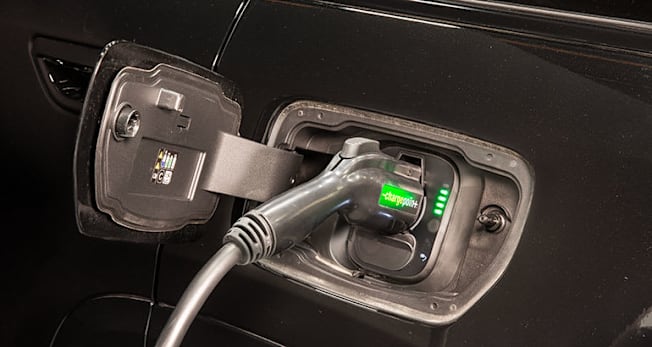
Photo: John Powers/Consumer Reports Photo: John Powers/Consumer Reports
Controls, infotainment, and connectivity: At this point, readers may want to stretch or get something to drink. This could take a while.
Let’s start with the good stuff. The wireless charger is in a convenient location and has an “in use” indicator light that is easy to see from the driver’s seat. The conventional steering wheel buttons are easy to use, and it’s nice that Jeep has a power button to turn the SUV on and off (some EVs don’t). Testers said that the digital gauge cluster is easy to read, and both Android Auto and Apple CarPlay quickly paired the first time and easily reconnected during subsequent drives.
Unfortunately, that’s about it for the good.
Most testers commented on how the right side of the steering wheel blocks the heated steering wheel, heated seat, and audio mute buttons on the far-left side of the center screen. We’ve experienced this same issue in other Jeep SUVs.
The digital gauge cluster is very slow to respond to inputs from the steering wheel controls, and some of the graphics look as if they’re out of the 1983 arcade game Spy Hunter.
Like most other Stellantis vehicles we’ve recently tested, the Wagoneer S’s infotainment screen is slow to respond to inputs and slow to load menus. It also has some very long lists to navigate through, and is filled with small icons and text. These small icons have even smaller touch targets, so it’s a challenge to use the system while driving. One tester found it hard to hit the right spot on the regen braking level and creep mode buttons, which are fairly important functions in an EV. A number of drivers also asked if anyone at Stellantis wears polarized sunglasses, because the screen is spotty when viewed through them.
A touch-sensitive bar with a few controls sits beneath the main screen. Unfortunately, this space is the perfect area for the driver to rest their hand while using that screen. The result is that you may inadvertently turn off electronic stability control (ESC) or lane departure warning features, as they are controlled by two of the buttons on the bar.
Beneath that touch-sensitive bar are the touch-sensitive climate controls, which sit under a small ledge and give zero feedback when activated. We’ll let one tester’s frustration explain: “It’s amazing that somebody found a way to make touch capacitive climate controls worse. Yes, let’s stick commonly used controls under a ledge so that they’re harder to see AND reach! Maybe the intention was that they would be easier to see in the sun this way, but they are a fingerprint magnet and still get washed out in direct sunlight.” It’s impossible to know if you’ve changed a function unless you look at the controls, which forces you to glance away from the road.
It gets even less intuitive. Those climate controls are actually on the bottom of a screen tucked away under the center console. Pushing the base lowers a larger screen with touch-sensitive airflow and temperature adjustments—and nothing else.
Instead of a traditional door release, a Tesla-style button on the door armrest opens the doors from the inside, but it’s recessed and placed too far rearward to use easily. People who haven’t been in the SUV usually can’t figure out how to open the door, and the narrow cabin further obscures the button because occupants butt up against it. Making matters worse, at night, the button isn’t illuminated . . . until the seat occupant presses it. Then it lights up.
Other annoyances include the infotainment system not displaying the navigation in the driver’s dashboard screen when using Android Auto (the car actually has an alert to tell you that this doesn’t work); the inability to do a single swipe of the windshield wipers without spraying the windshield with washer fluid; the gear selector—similar to the one in other Jeeps—that makes it too easy to put the SUV in Park when the driver wants to engage Reverse; and consistent audio dropouts when streaming music with either Android Auto or Apple CarPlay.
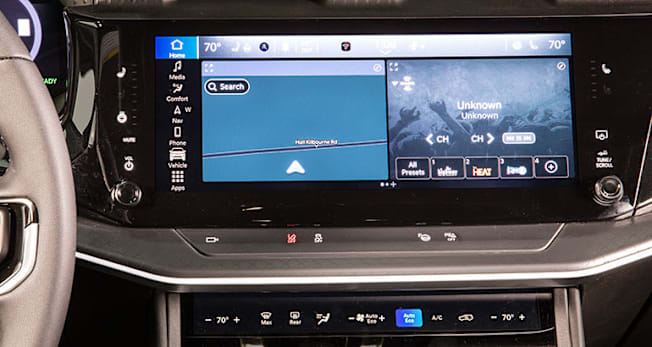
Photo: John Powers/Consumer Reports Photo: John Powers/Consumer Reports
Visibility: Trying to see out of the front and rear of the Wagoneer S is another universal dislike among our testers. “Outward views are tough, even up front,” said one tester. Another tester commented, “Visibility is compromised. The [windshield] A-pillars are wide, and the D-pillar size is significant.” A third said, “I checked over my shoulder a lot when backing out of my driveway. The dirty rear window, because of the lack of a rear wiper, didn’t help.”
The A-pillars are quite thick, especially at their base where they meet the side-view mirror. This mirror assembly is very large, and there’s no space between the mirror housing and the pillar. This creates a big blind spot to have to peer around when driving through corners or making turns at intersections. A crossing pedestrian could easily get lost in that blind spot.
The view straight back is impacted by the wide wraparound rear roof pillar and small, steeply angled rear window. Large rear head restraints also block a portion of the view back. Plus, Jeep is yet another manufacturer that thinks the aerodynamic affect of a rear window wiper is a significant issue, and chose not to include one. The result is a constantly filthy rear window, further compromising the view straight back. Automakers: Despite what your aerodynamic models tell you, the rear window doesn’t clean itself in real-world use. Stop omitting the rear wiper.
Odd size: Jeep’s EV SUV is smaller than a Jeep Grand Cherokee, but it has the Wagoneer name, which was also used on the automaker’s full-sized three-row gas-powered SUVs. To make things more confusing, the original gas-powered Wagoneer is now called the Grand Wagoneer. The result of its ’tweener size is that the SUV has a narrower track (the distance between the wheels on an axle) than the Grand Cherokee, yet has a larger turning radius.
In addition, the Wagoneer S has noticeably narrow front and rear seating positions. Some drivers said that the seating position was cramped, with the wide center console taking up considerable room. Numerous testers noted that the low roofline cuts into rear-seat headroom, and the rear seat door armrests are narrow. Finally, the cargo area is somewhat compromised by the sloping roof and steeply angled glass on the rear hatch, limiting the height of what can be carried.
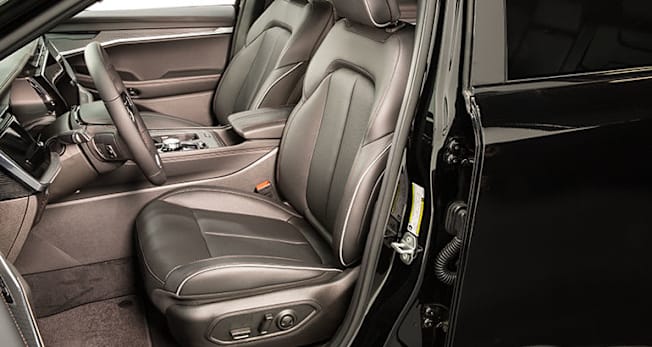
Photo: John Powers/Consumer Reports Photo: John Powers/Consumer Reports
What We'll Keep an Eye On
Range: Some testers commented that the range predictions would start at 250 miles on a full charge, rather than the EPA-rated 294 miles. It would remain there until the state-of-charge (SOC) reached 90 to 92 percent, at which point it would start to drop. We’ll put the Wagoneer S through our 70-mph highway-range test to see how it performs in the real world.
Seat comfort: Opinions on the front and rear seats ranged from good to merely acceptable. Some testers found the bolsters on the bottom cushion too narrow, forcing them to sit on them rather than between them. Another tester said the seatback was lumpy and that they could feel the different parts of the seat, especially the upper section of the front seats.
Other testers praised the well-positioned adjustable lumbar support (though it does not adjust for height), the comfortable cushions, and good thigh support.
We will have additional drivers of different body types sit in the Wagoneer S as part of our testing.
Ride comfort: Most testers noted in our logbook that the Wagoneer S does a good job of filtering out the impacts from potholes and drain grates. “Easily my favorite thing about this vehicle,” said one tester. The impact from hitting a road imperfection, such as a highway expansion joint, is minimally felt by the passengers.
While impacts don’t punch through to the cabin, the Jeep has difficulty with the aftereffects. Following the impact, there is excessive rebound/bouncing action with a lot of vertical movement before the body settles back down. In addition, the body sways back and forth on straight roads when encountering uneven surfaces.
Stability control off: A number of drivers noted that the Wagoneer S would give a message that the ESC was turned off when Sport mode is engaged. We’ll find out to what extent—fully off or just very lenient—when we put the Wagoneer S through its paces on our track.
Fit and finish: Initial feedback on the Wagoneer S’s interior ranged from okay to unimpressive, with one “Awful” directed at the harsh, plastic-sounding turn signal indicator.
Some strengths that testers mentioned were the nicely lined bins and cubbies, the padded door panels and windowsills, the chrome and glossy black trim on the window switches, and the contrasting stitching throughout.
None of us found the interior to be up to the standards expected in a $68,000 vehicle. Many buttons and knobs feel flimsy, there’s a weird matte black trim on the sides of the dashboard that looks as if it’s covered in plastic film, the headliner and windshield pillars are covered in very low-quality material, the dashboard reflects up onto the windshield (one tester laid a shirt over it to mitigate the glare), and the infotainment screen has a giant blotch on the lower-right side when viewed through polarized sunglasses.
Acceleration performance: Considering how much better the Wagoneer S drove in Eco mode, we may take a few acceleration runs that way just to see how it affects performance. We’ll also see if the balky power delivery that many testers experienced hurt the Jeep’s 0-to-60-mph acceleration times.
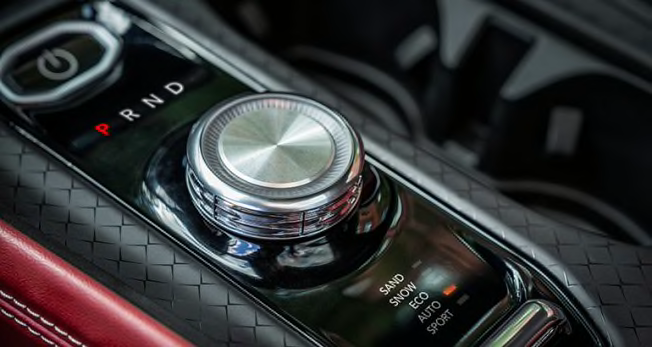
Photo: Jeep Photo: Jeep
Safety and Driver Assistance Systems
A number of active safety and driver assistance features are standard equipment on the new Wagoneer S, including automatic emergency braking (AEB), AEB that works at highway speeds, blind spot warning (BSW), and rear cross traffic warning (RCTW). The AEB has an enhancement—available on the current, gas-powered Wagoneer—that detects oncoming cars at an intersection and applies the brakes if needed. Traffic sign recognition and surround-view cameras are also standard.
So far, the advanced driver assistance systems (ADAS) seem to work fairly well. Our testers found that the lane centering assistance (LCA) system usually keeps the SUV centered in the lane. When the driver makes small steering inputs, the system works well and doesn’t fight back. However, on curves, the system tends to bias itself close to the inside part of the lane, which can bring the Wagoneer S disconcertingly close to vehicles in a neighboring lane.
The adaptive cruise control took a long time to register a vehicle ahead when approaching slow or stopped traffic. This resulted in the system slamming on the brakes, then slowly crawling along until it matched the pace of traffic ahead.
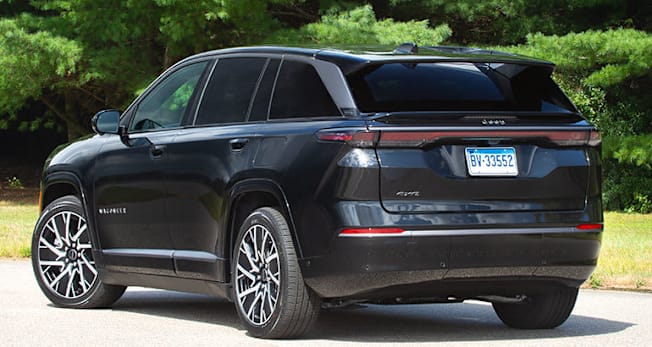
Photo: John Powers/Consumer Reports Photo: John Powers/Consumer Reports

















